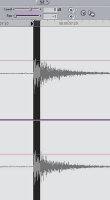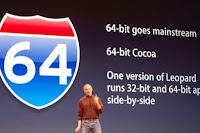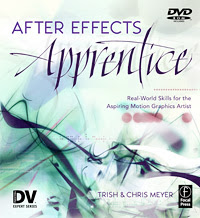
While QuickTime X (
more here) may just take
time to unfold, as it did during the initial transition from OS 9, QuickTime as we've known it could end. It's odd to say since Mac users enjoy the benefits of many codecs and formats that can be used without a hitch.
It's pretty confusing when you step just beyond the world of Apple, and not just because of the gamma problems posed by QuickTime. Since there's no 64-bit version of QuickTime, import/export of QT files haven't been available in the 64-bit Windows versions of Nuke, Eyeon Fusion, or Syntheyes. On the Mac, Apple does provide technology that passes 64-bit Quicktime requests to a 32-bit server process, but it's slow and codec-limited. It's really an industry problem, not just an Apple problem -- but one made apparent by the dependence on QuickTime, as noted last year by Mark Christiansen in
Why QuickTime is the US Dollar of Digital Video. Some remain optimistic, like Philip Hodgetts in
Why is QuickTime X like OS X? and
John Siracusa in his
Mac OS X 10.6 Snow Leopard: the Ars Technica review (
QuickTime is dealt with on page 6 and page 16 of like 23).
On the distribution front, Adobe Flash video versus HTML 5 video is developing news. Apple is embedding video with HTML 5 style; see, via MacRumors,
Apple goes live with HTML5 video. For background on HTML 5 video, see the latest overview from
Mark Pilgrim and an AEP post from July,
HTTP video: reports on Firefox and Apple. Meanwhile Microsoft seems content to block DivX from Windows 7, and only Google knows if the VP6+ codecs gained by gobbling On2 can compete with MPEG-4.
On the post production side, one might have hoped that Adobe would be a cross-platform savior and buy
Cineform to trump
Apple ProRes and
Avid DNxHD and solve millions of small time intermediate
codec headaches from compression, bit depth, and color. Unfortunately there's no one decoder ring to rule them all, and not likely to be in a competitive environment despite the whining, but there's not even an updated
OneRiver Media Codec Resource Site. There are some good discussions though, like
Codec Wars 2009: Lossless and virtually lossless codecs (eg, ProRes and
Bitjazz, which lets you author on Windows) and various threads on
REDUser.net.
 Motionworks' Unplugged 12 features an interview with Nick Campbell (the Greyscale Gorilla):
Motionworks' Unplugged 12 features an interview with Nick Campbell (the Greyscale Gorilla):






























